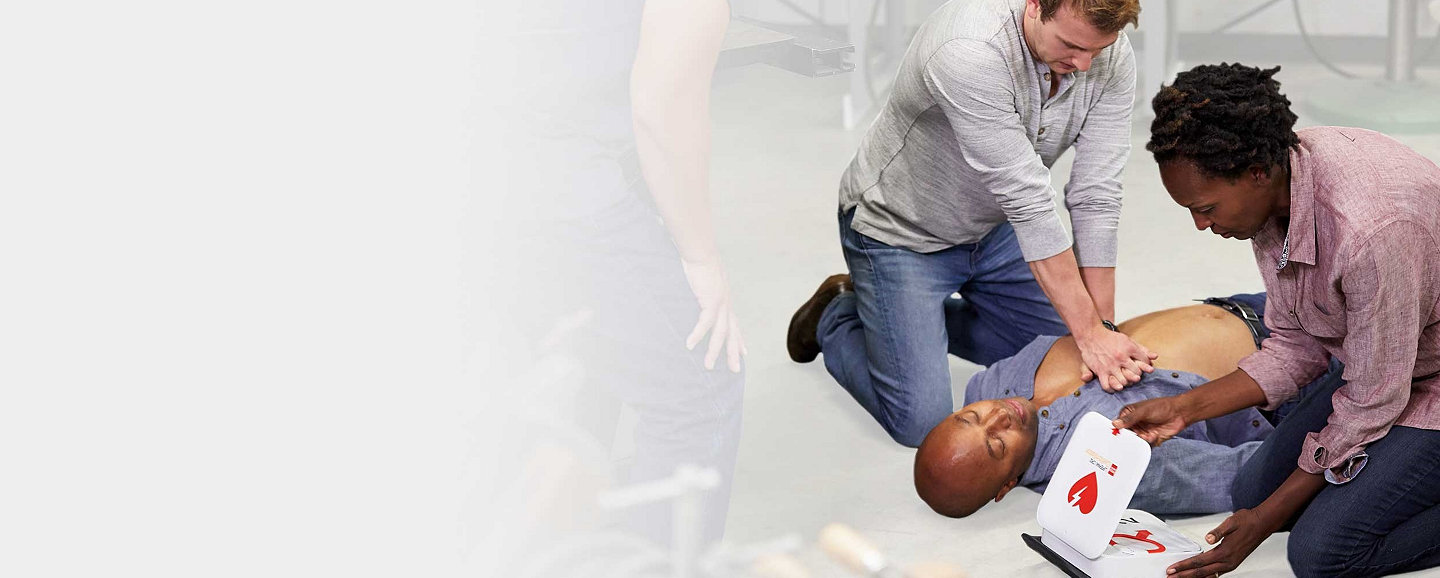22-Apr-2022
4-minute read
Turn on any T.V. medical drama and you're bound to hear the staff yell phrases like:
"Code Blue"
"Get the crash cart!"
"We need to shock him!"
"Clear!"
It's entertaining, but what do these words really mean? What's the role of defibrillation during a sudden cardiac arrest and how does an automated external defibrillator (AED) work?
What is sudden cardiac arrest?
Sudden cardiac arrest strikes more than 350,000 people in the U.S. every year.1 While experiencing a cardiac arrest is still considered a rare event (around .11 percent of the U.S. population annually), it is a leading cause of death with a rate higher than breast cancer, lung cancer and HIV/AIDS combined.2
During sudden cardiac arrest, the victim's heart has an abnormal heart rhythm called ventricular fibrillation. This sudden loss of functionality in the heart stops blood pumping to the rest of the body, with death occurring in 90 percent of victims.3 When cardiac arrest occurs, the heart needs immediate treatment from a defibrillator to restart the electrical system.
A heart attack and sudden cardiac arrest are very different events. Unlike a heart attack, there is rarely any warning before a sudden cardiac arrest. A victim of heart attack usually remains awake and able to talk while a cardiac arrest victim typically loses consciousness or is found unconscious.
What do you do if you witness a sudden cardiac arrest?
1. Call 911
2. Begin CPR
3. Retrieve an AED and follow the instructions
How defibrillation can help a cardiac arrest victim?
While CPR is critical immediately following a sudden cardiac arrest, using an AED in tandem with CPR within a few minutes of the event is crucial to prevent death. In fact, a cardiac arrest victim's chance of survival decreases by 7 to 10 percent for every minute without defibrillation.4
An AED automatically analyzes the heart rhythm and, when appropriate, delivers an electric shock. AEDs use a moderately high voltage to pass an electric current through the victim's heart. The heart receives anywhere from 100 to 360 joules of electrical energy depending on the AED used. Defibrillation to a heart experiencing sudden cardiac arrest briefly stops all electrical activity in the heart. This brief break from the previous electrical chaos (ventricular fibrillation) can be enough for the heart to restart with a normal rhythm.
How do you operate an AED?
Operating an AED during an emergency can be stressful for an untrained user. The scene is likely chaotic as bystanders begin CPR, call 911 and console others.
Fortunately, public access defibrillators (PADs) are designed to be as user-friendly as possible. With clear images and voice prompts on some models, nearly anyone will be able to use it properly after a quick training session.
AEDs are programmed to tell rescuers exactly what to do and where to place the electrode pads using voice and visual prompts. Through these electrodes, the AED will automatically analyze the electrical activity of the heart to determine if a shockable rhythm is present.
The AED guides rescuers through the resuscitation process, advising when to perform compressions. If the AED determines the person's heart needs a shock, it instructs rescuers to stand back so a shock can be safely given through the electrode pads on the chest.
Some AED models will tell the user to 'stand clear' of the victim and then push a button to shock, while others are fully automatic and will deliver a shock after giving rescuers a 'stand clear' warning.
Not everyone can be saved from sudden cardiac arrest, even with defibrillation. But early defibrillation provides the best chance for survival, especially when delivered within three to five minutes of collapse.
Together, we save lives.
Help keep your workplace safe with Stryker's full line of defibrillators. With the right solution for all public places, we can help you improve sudden cardiac arrest survival rates in your community.
Contact an AED expert today to learn more about our full line of defibrillators and program management options.
Learn more
1. http://circ.ahajournals.org/content/early/2018/01/30/CIR.0000000000000558
2. https://associationdatabase.com/aws/SCAA/asset_manager/get_file/43858
3. http://circ.ahajournals.org/content/early/2018/01/30/CIR.0000000000000558
4. American Heart Association, "Implementing an AED Program." (PDF)
3345054_A

